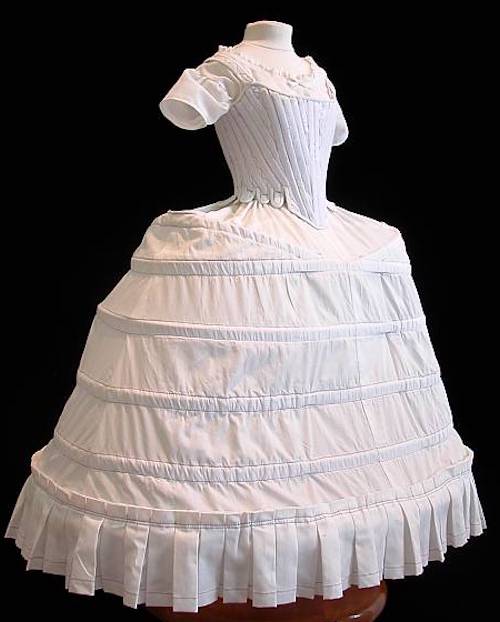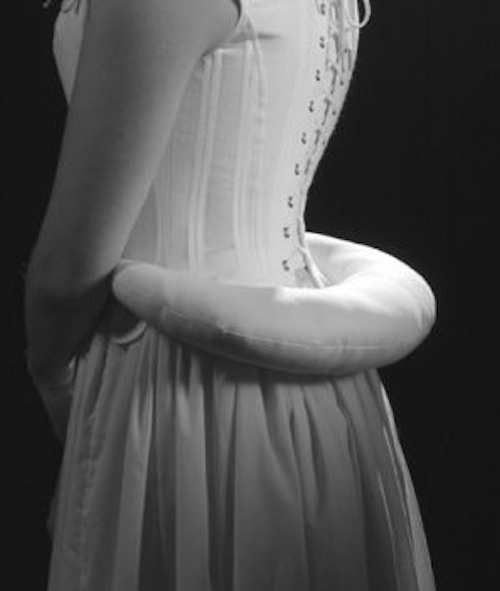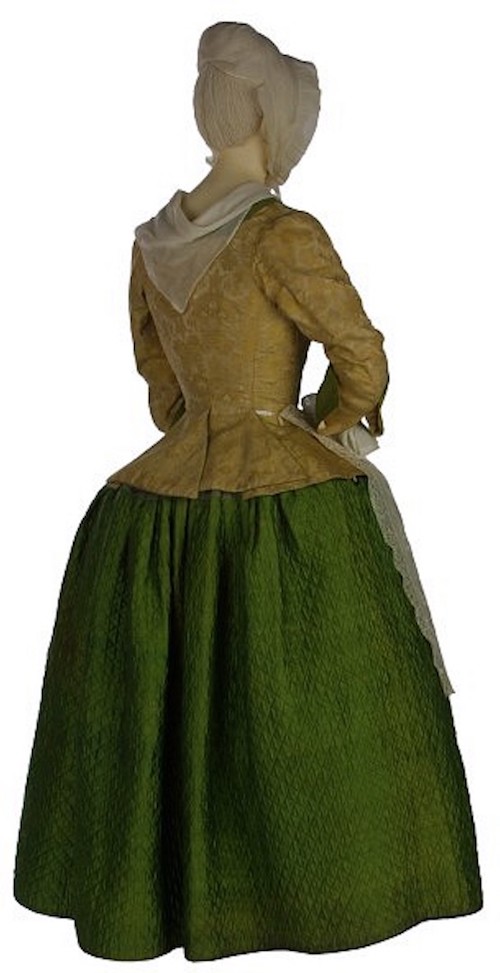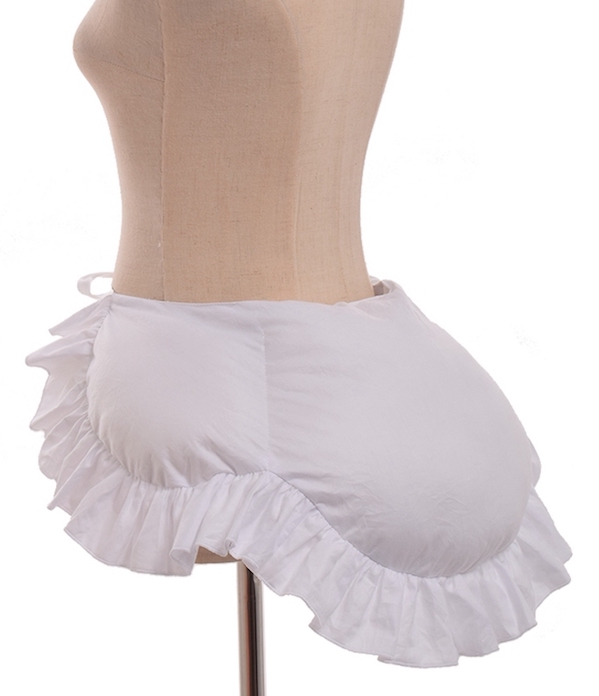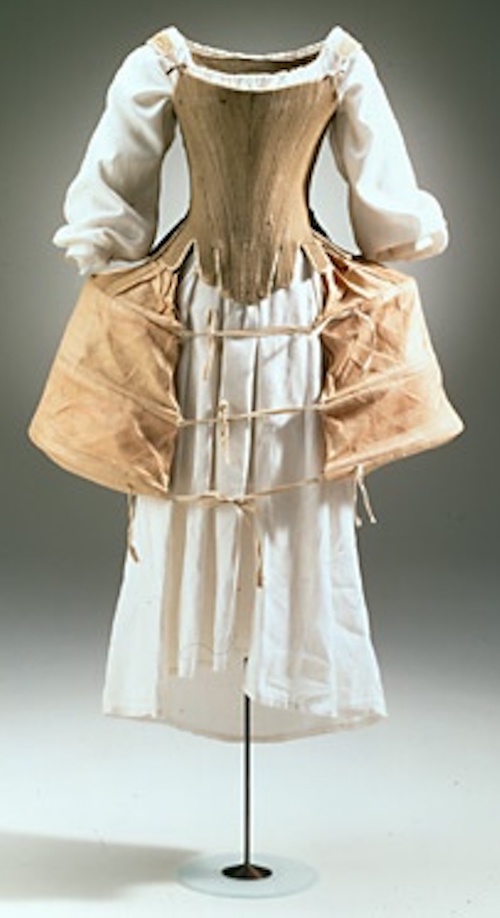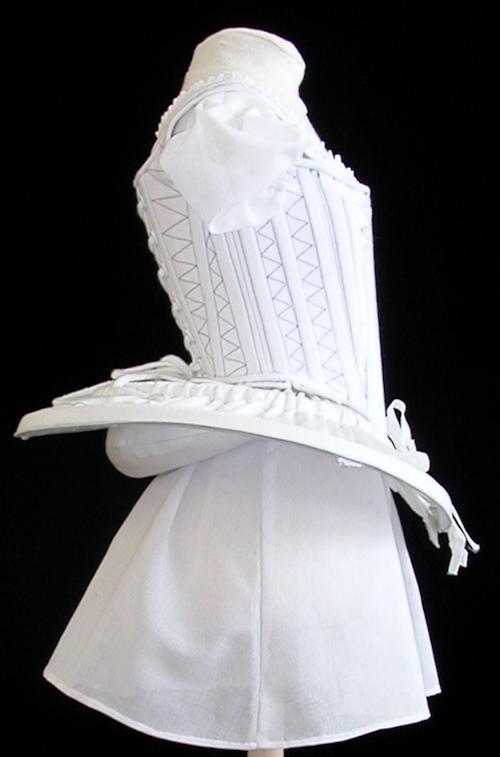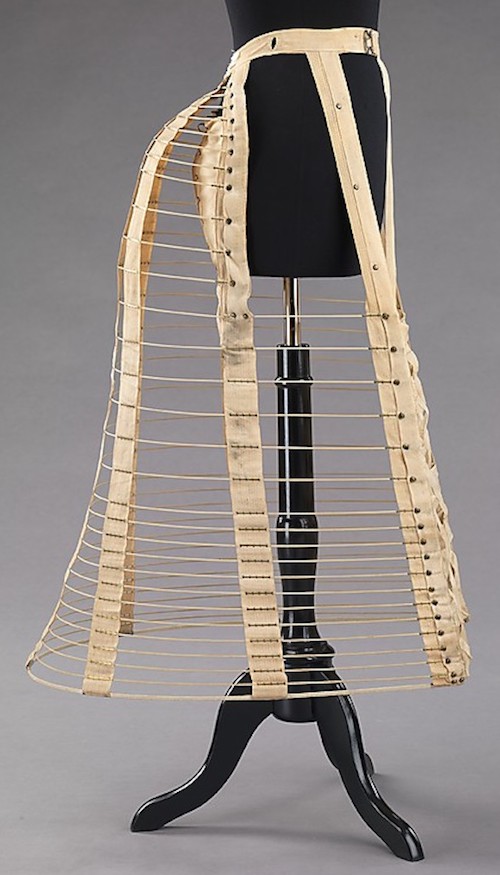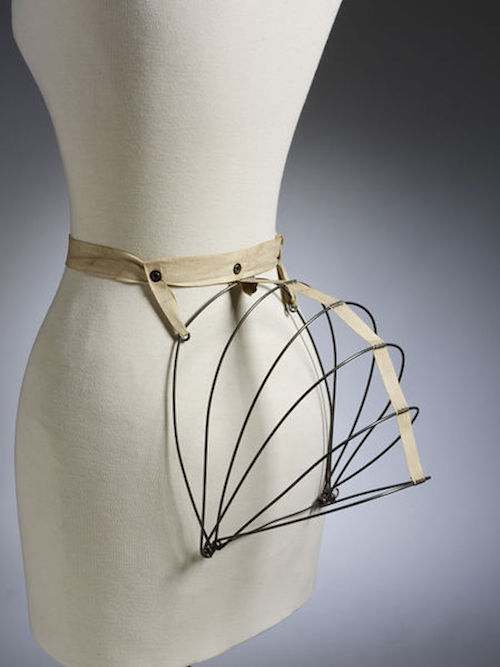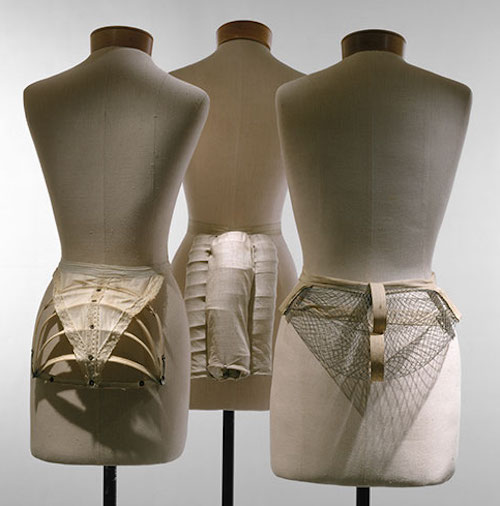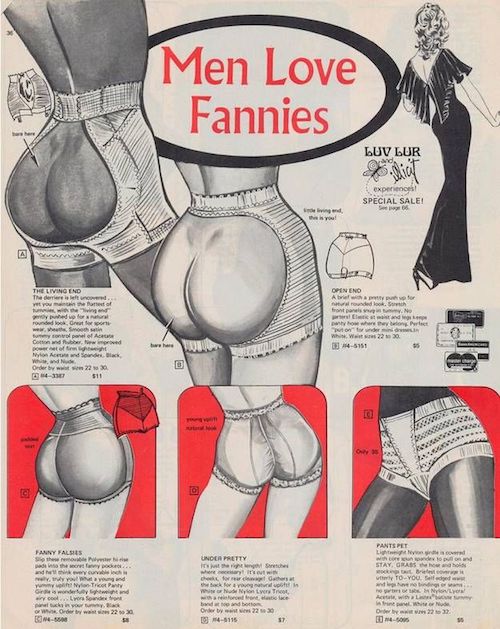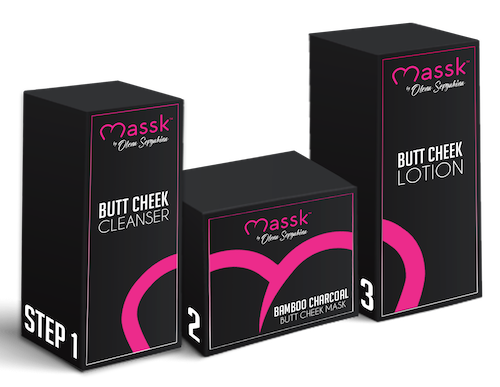Fashion has rarely been about practicality, and throughout history, it’s often been about making a woman’s butt look bigger. Here are some fashion styles that have done just that over the centuries.
1470-1589: Farthingales. Although there are no surviving examples of this type of garment, they probably consisted of one or more large hoops with horizontal stiffeners, which radiated from around the waist in order to produce a flat, platter-like shape when supported underneath by a bum roll.
1550-1890: Bum Rolls. Bum rolls were crescent-shaped pads worn under ladies’ skirts to accentuate the hips and make the waist appear smaller.
A triple-tiered bum roll
1585-1796: Quilted Petticoats. Petticoats were worn by women who wanted to have a certain shape created by their clothing that implied the wearer had a large bum. The petticoats, if sufficiently full, would hold the overskirt out in a domed shape, giving the impression of a small waist relative to the hips.
A bum pad with a peplum trim
1600-1780: Panniers. Panniers were support structures made of whalebone, reeds and, later, metal, which a woman wore around her waist to make her dress spread out wide at either side. They accentuated the smallness of the waist and enlarged the hips. The word “panniers” comes from the Old French word panier, meaning breadbasket, which were carried in pairs on each side of a beast of burden, or the shoulders of a person, in order to transport goods and provisions. Elaborate panniers expanded skirts several feet at the sides, requiring that the most fashionable women of their day be given a wide berth.
“I own the female world is much estranged
From what it was, and top and bottom changed:
The head was once their darling constant care,
But women’s heads can’t heavy burdens bear–
As much, I mean as they can do elsewhere;
So wisely they transferred the mode of dress,
And furnished t’other end with the excess
What tho’ like spires or pyramids they show,
Sharp at the top, and vast of bulk below?
It is a sign they stand the more secure:
A maypole will not like a church endure
And ships at sea, when stormy winds prevail
Are safer in their ballast than their sail.”
– Poem by Mrs. Selby, an 18th-century mantua-maker (dressmaker)
1850-1869: Caged Crinoline Underskirts. Caged crinoline underskirts were stiffened petticoats designed to hold a woman’s outer skirt away from her body for modesty and shape. The steel-hooped cage crinoline underskirt was first patented in April 1856. Steel-caged crinolines were mass-produced in huge quantity, with factories across the Western world fabricating tens of thousands each year.
1869-1889: Bustles. Bustles were made of steel wires and attached to a pivot, so they folded in on themselves when the wearer sat down, and sprang back open when she rose. Bustles were also known as tournures or dress-iproves by Victorian ladies, as the word bustle was considered vulgar.
Some bustles were made of fabric, including silk, cashmere and flannel. They could be stuffed with horsehair, down, and even straw to achieve the desired fullness.
1973: Butt-Beautifying Undergarments. This Frederick’s of Hollywood print ad promoted butt-lifting girdles, butt-smoothing panties, and falsies for the fanny.
2017: Massk® Butt-Beautifying Products. Massk® International releases Massk®’s Butt Cheek Cleanser, Bamboo Charcoal Butt Cheek Mask, and Butt Cheek Lotion. Massk® products add nutrients, remove blemishes, tighten, tone, exfoliate, and improve radiance. He’s not checking out your elbow®! So, before the beach or the bedroom, use Massk®. Order Now
Visit BeautifulButt.com


